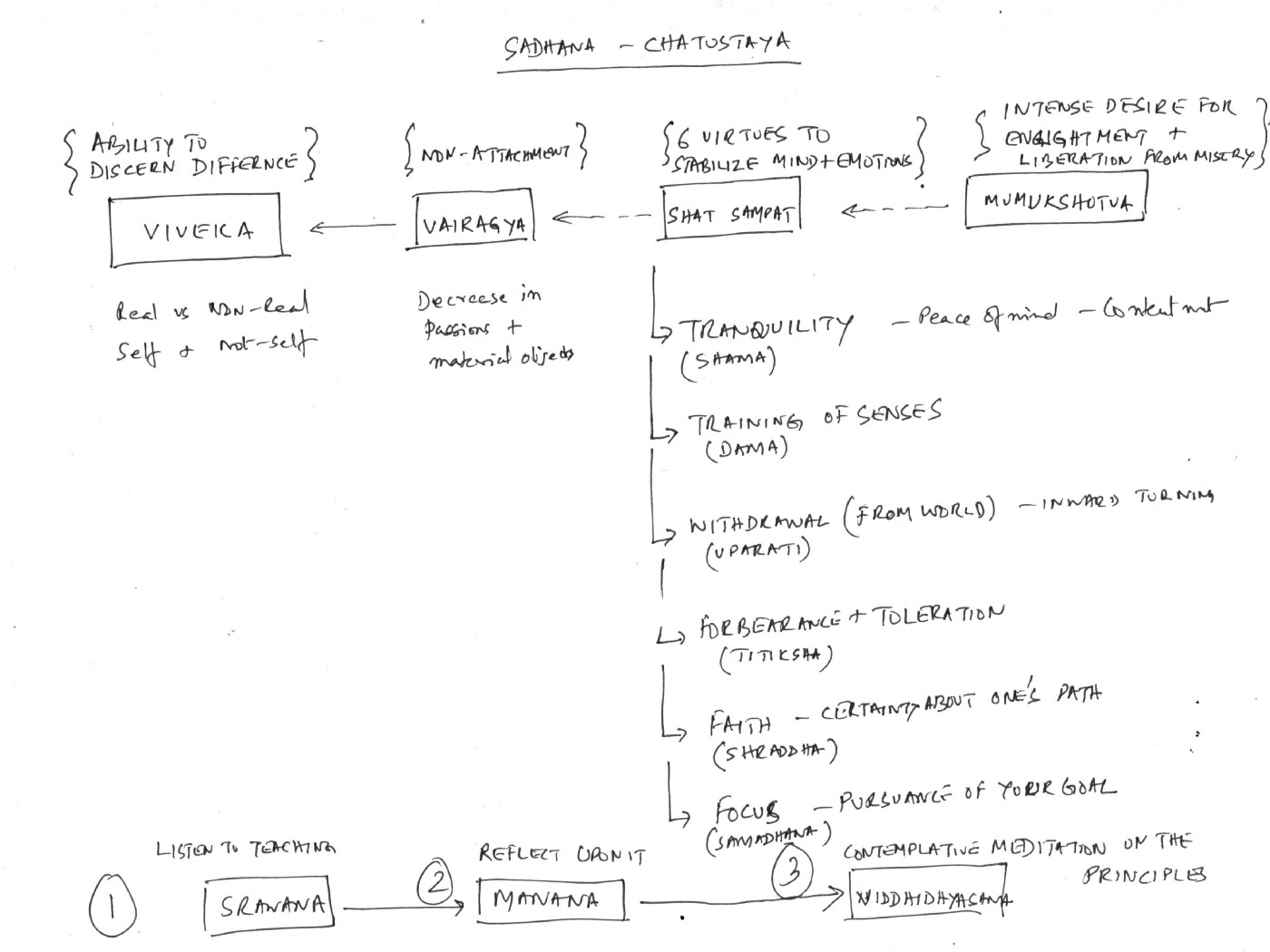The Sadhana Chatustaya is an excellent means to assess your current situation and prepare yourself to attempt conscious living. First expounded by Guru Shankaracharya in Tattva Bodha (and repeated as pre-qualifiers to study Upanishads such as the Mandukya), there are many classical interpretations available already.

Here is a nuanced view of the 4 pre-qualifiers (or read as steps to prepare oneself).
Mumukshutva — It all starts with the desire for liberation. Desire cannot be practiced but is triggered by a combination of events. It could be the cycle of misery and happiness that drives one to the edge whence you start seeking liberation.
Shat Sampat — You progress with stabilizing the mind and its associated emotions. We are told that the 6 virtues that need to be practised are (a) Peace of mind (b) Control of senses (sense-withdrawal articulated in Patanjali Yoga) (c) Withdrawal to the inner world (desisting from sense enjoyments) (d) Toleration of existing conflicts (e) having certainty on the path embarked upon and (f) intense focus. While these virtues may seem to overlap (and they do), they all point to one objective — Get to a calmer and more detached mind over time.
Vairagya— It is a feeling of detachment, one attains and could be construed to be a measure of one’s success in practicing shat-sampat. Scriptures point out that Vairagya starts at a base level of decrease in passions and (or for) material objects — over time you develop detachment at a higher level. Quote “When it is non-thirst for even the gunas (constituents of nature) due to the realization of Purusha (true Self), that leads to the supreme form of vairagya.” (Yoga Sutras of Patanjali 1.16)”
Viveka — The ability to discern the difference i.e. real vs. non-real, self or not-self is an outcome that can be sensed with a rational mind. It may go hand in hand with the sense of attaining Vairagya or not. It is certainly a practice that is focussed more on the use of the rational mind.
At the foundation of these four pillars of Sadhana, lies the development of skills of deep listening (Sravana), reflection (Manana) & contemplative meditation (ViddhiDhyasana). Listening to a guru is far easier (and maybe more practical) than gleaning insights from aphorisms. Unless one reflects in quiet, it is hard to digest deep insights. Contemplative meditation we believe is useful to permanently etch the learnings into our memory.
This seems to be a proven framework of self-learning and diagnostics, which one can put to action while attempting to traverse the path of Conscious Living.


Recent Comments